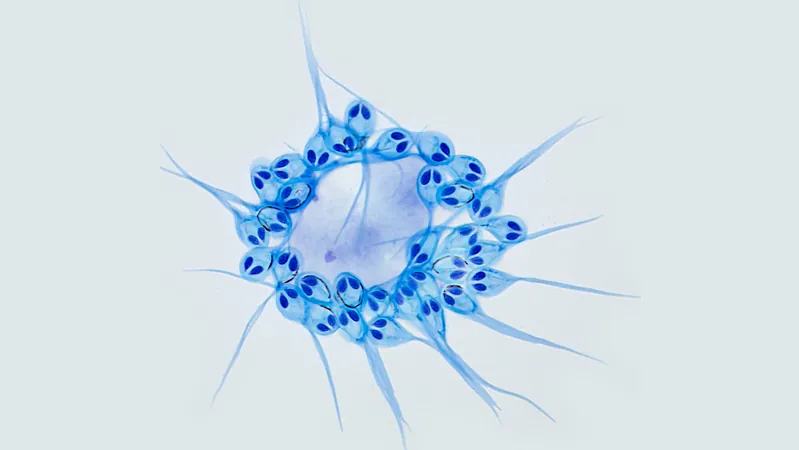
The Astonishing Discovery: Henneguya salminicola Defies Evolution by Living Without Mitochondria!
2025-01-12
Author: Yu
The Astonishing Discovery: Henneguya salminicola Defies Evolution by Living Without Mitochondria!
In a groundbreaking revelation that challenges our understanding of evolution and metabolism, researchers have discovered that Henneguya salminicola, a fascinating member of the Myxozoa class, has entirely lost its mitochondrial genome. This peculiar organism, a microscopic parasitic animal closely related to jellyfish and hydroids, raises questions about the metabolic capabilities we thought were universal among eukaryotes.
Typically, eukaryotes, which include plants, animals, and fungi, are known for their reliance on aerobic respiration—a process that requires oxygen for energy production. However, some unicellular organisms, primarily those dwelling in low-oxygen environments, have adapted by losing this key capability. The research led by a team of scientists utilized advanced deep sequencing techniques alongside microscopic observations to uncover that Henneguya salminicola has followed a similar evolutionary path, shedding its mitochondrial genome altogether.
Interestingly, while these myxozoan cells still maintain certain organelles that are similar to mitochondria, they lack the crucial genes needed for aerobic respiration and the replication of mitochondrial DNA. What does this mean for our understanding of life's adaptations? It's a stark reminder that the hallmark of aerobic respiration might not be as pervasive among animals as previously believed.
The study indicates that Henneguya salminicola has lost not only its mitochondrial DNA but also almost all the nuclear genes that would typically assist in mitochondrial gene transcription and replication. In a remarkable comparison, researchers also investigated Myxobolus squamalis, another related myxozoan that retains its mitochondrial genome. Fluorescence microscopy confirmed the presence of mitochondrial DNA in M. squamalis while showing its total absence in H. salminicola.
This research provides a unique glimpse into evolutionary biology, suggesting that adaptations to anaerobic environments are not confined to single-celled eukaryotes but can also occur in multicellular organisms. Such findings are crucial for understanding how life can thrive under extreme conditions.
While the discovery of Henneguya salminicola does not just stop at its loss of mitochondrial capacity—it opens up new avenues for research into the evolutionary transitions from aerobic to anaerobic metabolism. This new knowledge about how certain species have adjusted to their environments could inspire future studies in evolutionary biology, ecology, and even medicine.
Scientists are now left pondering: what other secrets do these enigmatic myxozoans hold? As we delve deeper into this strange and extraordinary group of organisms, the implications for our understanding of life itself may be far more profound than we ever imagined.
Stay tuned as further research promises to unveil even more astonishing adaptations in the animal kingdom!
 Brasil (PT)
Brasil (PT)
 Canada (EN)
Canada (EN)
 Chile (ES)
Chile (ES)
 Česko (CS)
Česko (CS)
 대한민국 (KO)
대한민국 (KO)
 España (ES)
España (ES)
 France (FR)
France (FR)
 Hong Kong (EN)
Hong Kong (EN)
 Italia (IT)
Italia (IT)
 日本 (JA)
日本 (JA)
 Magyarország (HU)
Magyarország (HU)
 Norge (NO)
Norge (NO)
 Polska (PL)
Polska (PL)
 Schweiz (DE)
Schweiz (DE)
 Singapore (EN)
Singapore (EN)
 Sverige (SV)
Sverige (SV)
 Suomi (FI)
Suomi (FI)
 Türkiye (TR)
Türkiye (TR)
 الإمارات العربية المتحدة (AR)
الإمارات العربية المتحدة (AR)